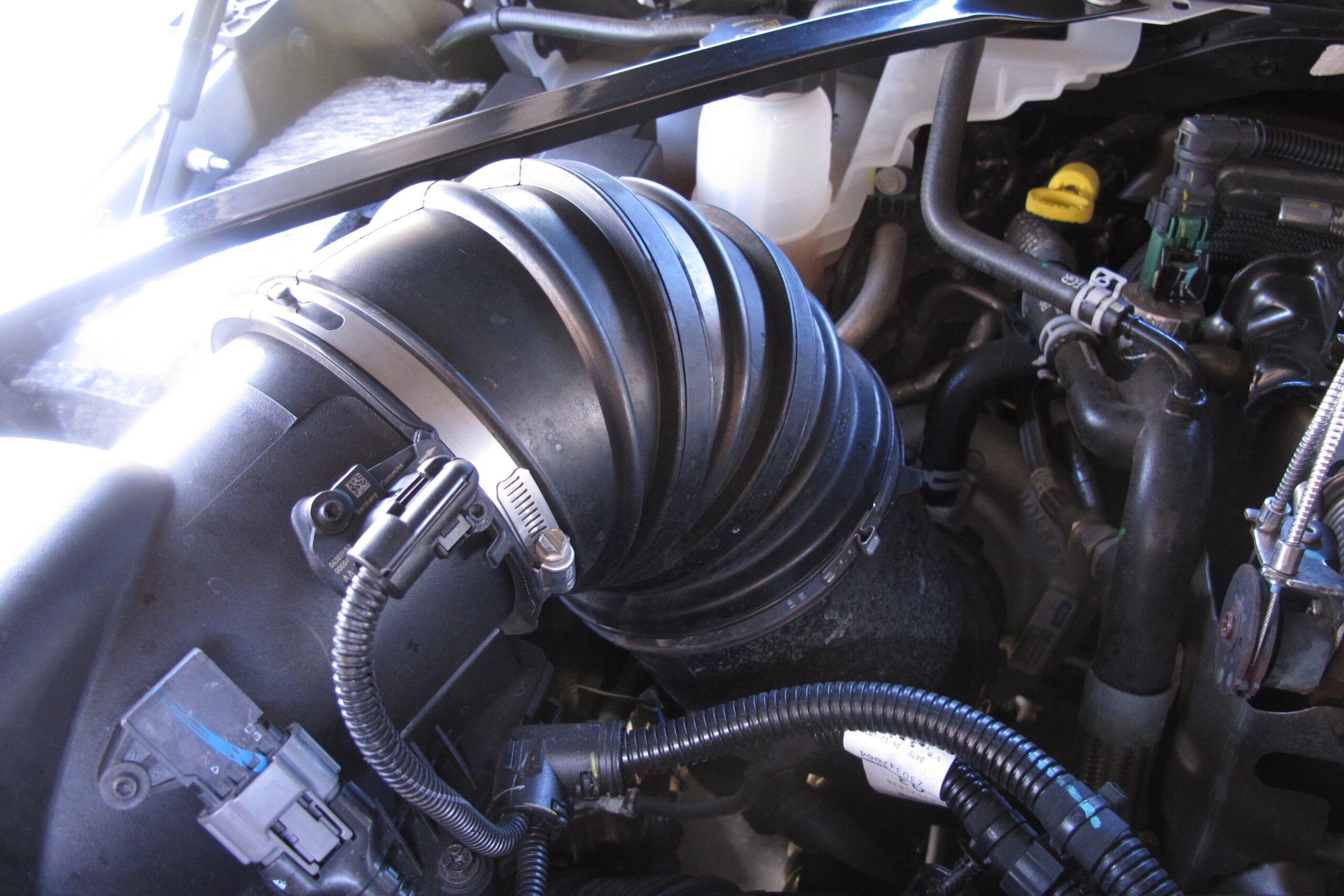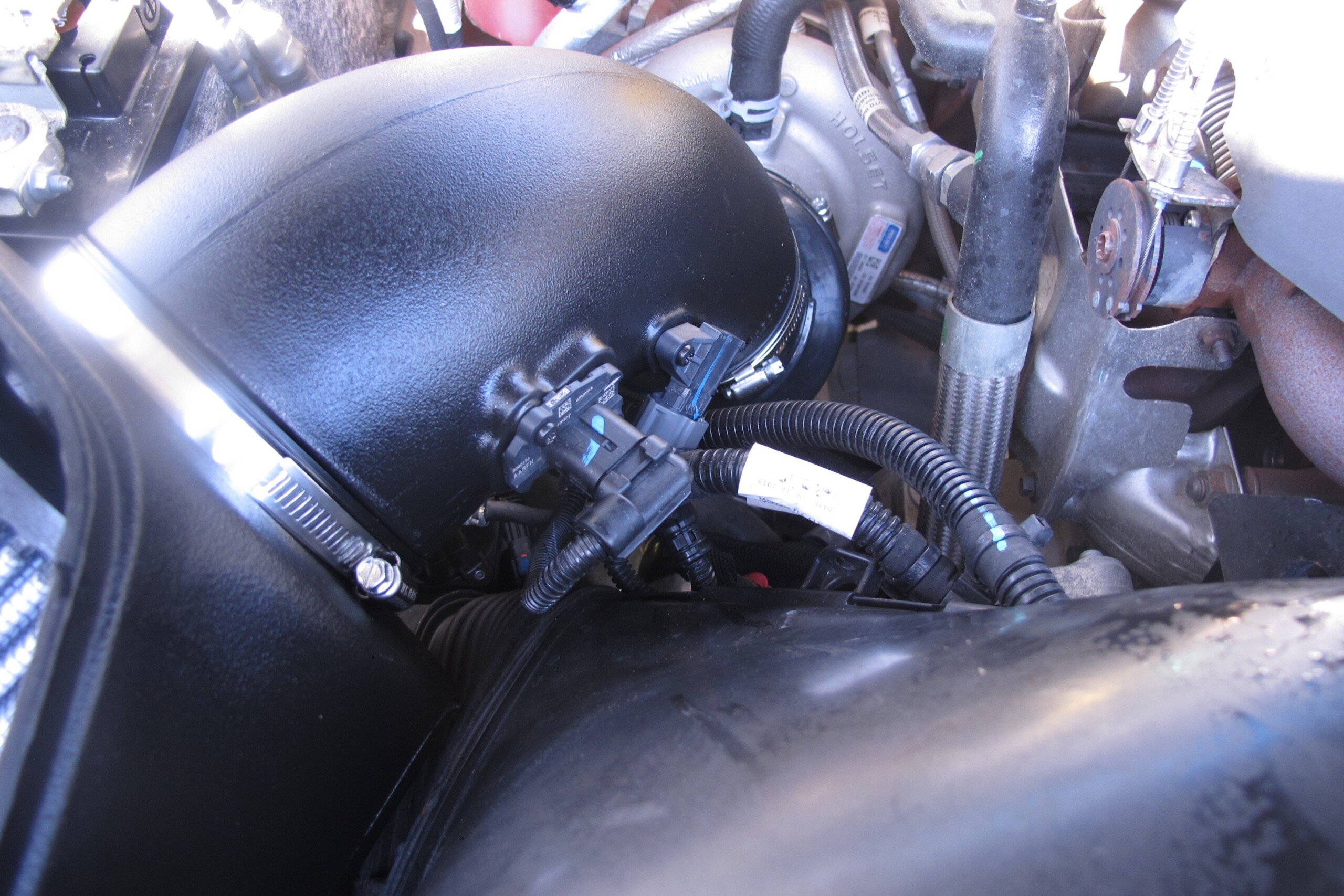If there is one thing you can find on the internet, it’s opinions. Be they political, about the best burger chain, or how to increase horsepower, everyone seems to have an opinion. While thinking about possible article ideas for DieselArmy.com, I came across several discussions involving cold air intake (CAI) kits and DPF-back exhaust parts. In theory, adding these two components to your truck should increase power output. Look at it this way, an engine is a mover of air and if you can get more in and more out, you should make more power. But there is a glitch in the process when it comes to diesel pickups, and we’ll get to that later.
So, with the question in hand, I thought it might be a good idea to test the theory on Project WorkHorse and see what would happen when a cold air intake and a DPF-back exhaust are introduced into the mix. The first product we added to the test was the Magnum FORCE CAI from aFe POWER and the DPF-back exhaust is from MagnaFlow.
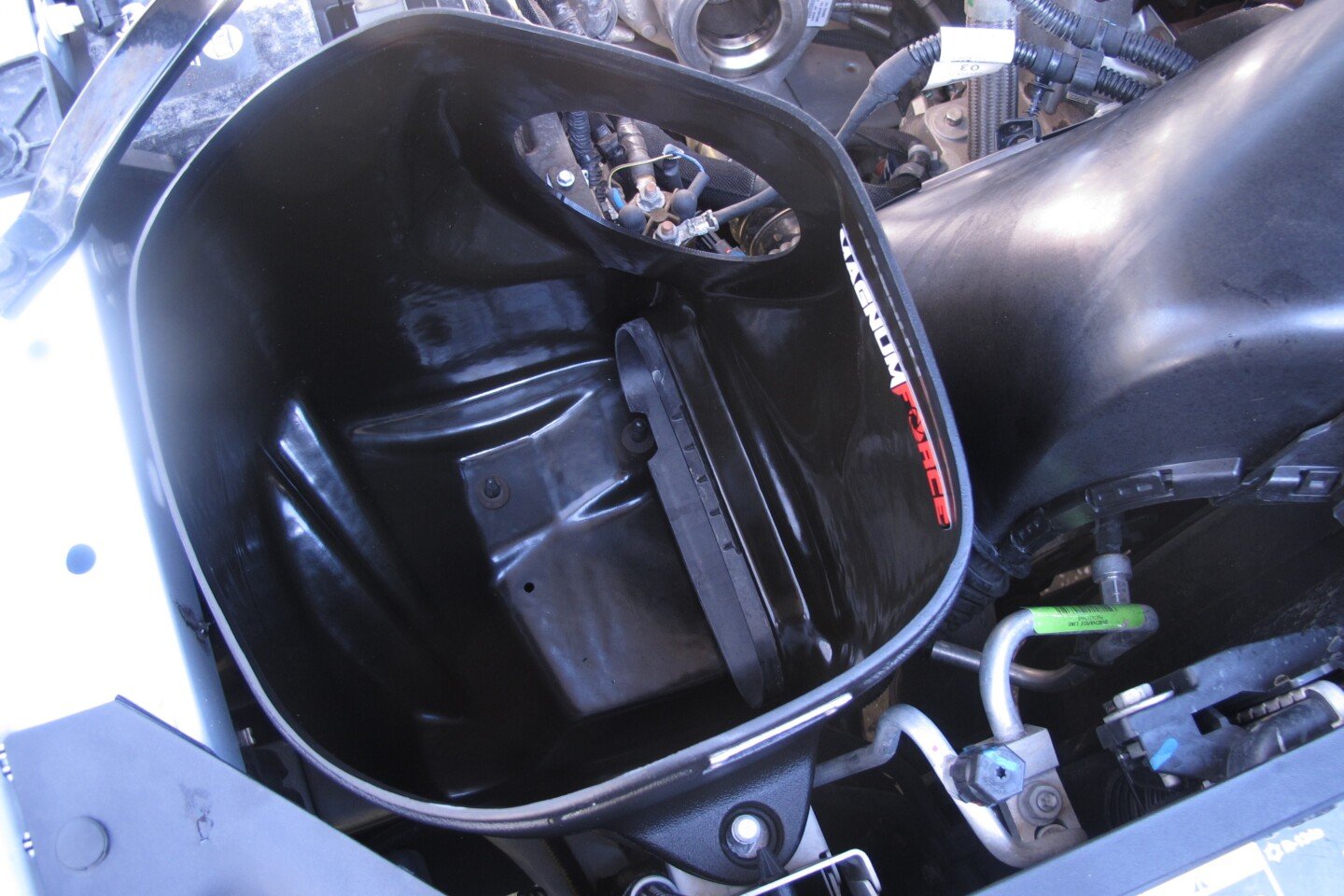
The new aFe filter box mounts in the factory location and utilizes the OE pre-filter ductwork to feed the system cold air.
Both are very reputable companies, and both have tested their products on a dyno and verified an increase in horsepower. That’s all well and good, but how does that translate to the real-world enthusiast? Other than being able to say what power is available, nothing. So, I decided to test in a way that we can all relate to, real-world driving.

The aFe Magnum FORCE intake kit comes with either a dry or oiled air filter. Either is acceptable in a diesel application. The problem arises when enthusiasts over-oil the filter, allowing the excess oil to get sucked into the filter. I chose to use a dry filter media.
Cold Air Intake Pulls In The Numbers
Initially, I thought I would use a chassis dyno to verify any results. But then I thought, this is a truck so let’s do some real-world testing. I decided that my test methodology would consist of several back-to-back 0-60 mph “pulls” on the highway. I would make test pulls after the addition of each new part. These are work trucks, so let’s test them in a “work” environment. But before I put any parts on WorkHorse, I needed to get a baseline.
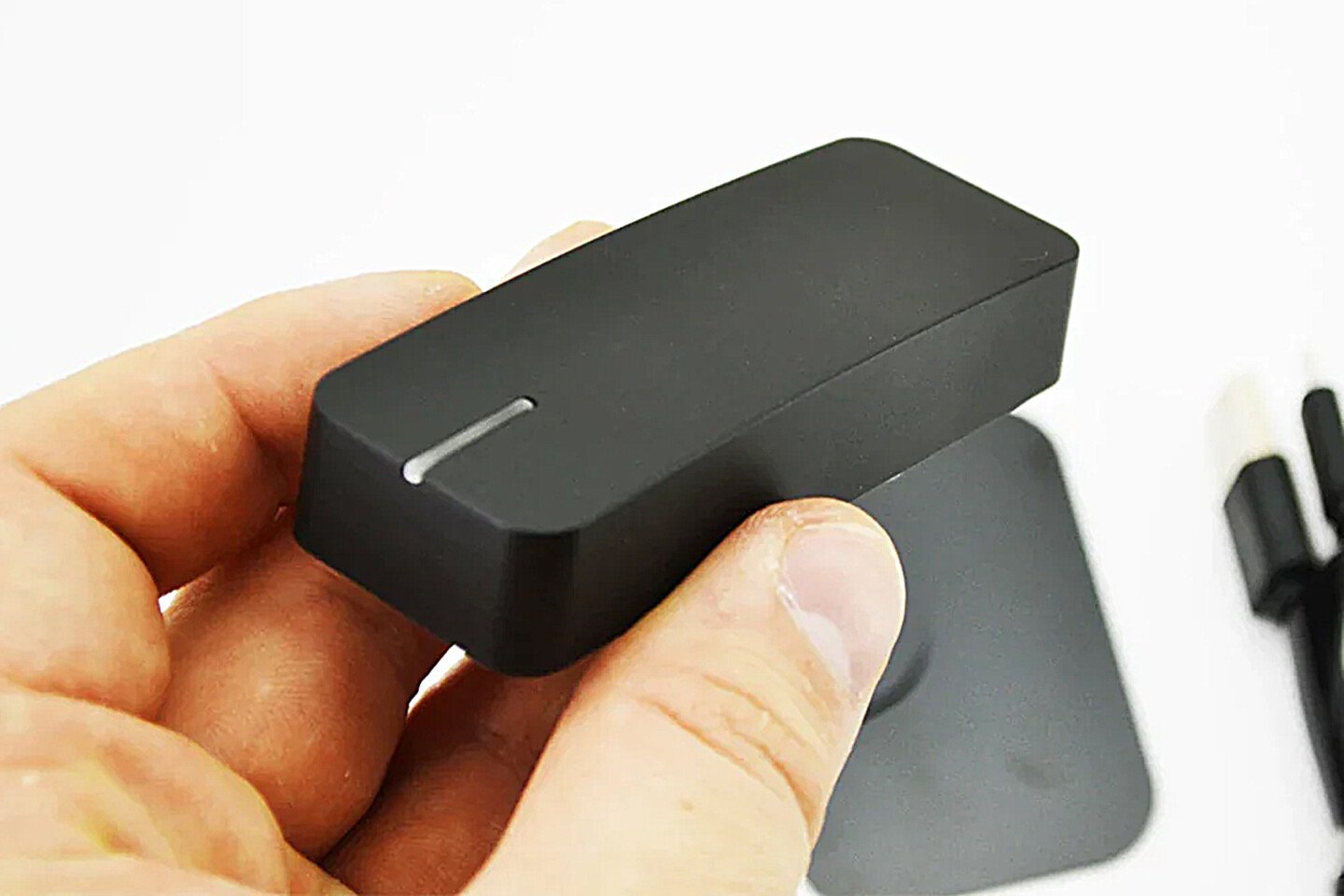
The Dragy Performance box is a GPS-enabled device that accurately measures time and distance. The perfect tool to test our results.
To get any discernable data to verify, I needed a way to measure time and distance. To accomplish this, I felt that using a product from Dragy Motorsports would give me solid and repeatable data. The Dragy GPS box gives the ability to measure the performance of your vehicle within 0.01 second and produce identical/repeatable results.
The Dragy box connects to your cell phone via an app and allows you to time/track 0-60 mph, 60-130 mph, 0-130 mph, 100-150 mph, 100-200 mph, eighth-mile, quarter-mile, half-mile, and one-mile performance.
For the record, I made three pulls with the Dragy and then chose the middle-of-the-pack numbers. I did not choose the quickest or the slowest pass. That said, my baseline 0-60 numbers were 9.14 seconds. It also required driving 454.1 feet to reach 60 mph.
Oiled VS. Dry Filtration
 We all know the difference between a dry filter and an oiled filter. While a dry filter is excellent at catching nearly all dirt particles, oiled filters have been proven to flow more air through their media because they are constructed from a more open cotton material that is coated with a thin layer of oil. Here is where the concern among diesel enthusiasts comes into play.
We all know the difference between a dry filter and an oiled filter. While a dry filter is excellent at catching nearly all dirt particles, oiled filters have been proven to flow more air through their media because they are constructed from a more open cotton material that is coated with a thin layer of oil. Here is where the concern among diesel enthusiasts comes into play.
Oiled filters need regular cleaning and reoiling. This is where a problem can arise. Rumors run rampant on the internet that n oiled filter will ruin your intake sensors and can even hurt your turbo. The only way this can happen is if you over-oil your filter when re-applying the oil. Common sense dictates that if there is too much oil on the filter, the excess can get sucked in through the cotton gauze and damage the MAF sensor.
According to Mike Santa Cruz of aFe, “both of aFe’s filters are washable and reusable. The oil we use on the PRO 5R filters is a very refined, high-grade filter oil. If the filter is over-saturated on the outside, and a small amount made its way through the filter, the sensors, turbo, or engine would not be harmed.”
Free Breathing With A Cold Air Intake
I started by installing the aFe’s Magnum FORCE cold air intake with a dry filter. According to aFe, in this configuration, the Magnum FORCE intake (with dry, reusable filter) can deliver a dyno-proven gain of up to 7 horsepower and 18 lb-ft of torque. I am also told it delivers a 28-percent increase in airflow (665 cfm at 7 inches H2O). The new aFe box integrates with the Ram’s factory air induction ductwork and the filter is an oil-free 360-degree radial-flow air filter with three layers of synthetic media for maximum convenience. Its progressive layering provides great filtration efficiency and dust-holding capacity, while not requiring the use of oils. This media is best suited for street and light off-road use. Its inverted top makes for more filter surface area, resulting in longer service intervals. If you prefer an oiled filter, one is available and according to aFe, frees up even more power and torque than the dry filter.
The difference between the OE exhaust and the MagnaFlow pipe is substantial.
The way the aFe intake helps begins with a high-quality, computer-designed, dyno-tuned intake tube that connects the Magnum FORCE filter box to the turbo. This smooth tube does not create a turbulent flow like the OE tube does. To connect the tube to the turbo is a high-temperature silicone bellows coupler. The install of the cold air intake took roughly 30 minutes. But you probably want to know if it made any noticeable improvement, not how long it took to install.
Just like the baseline, I made three pulls using the same road and driving style on the same day. With the addition of the cold air kit, the 0-60 times dipped to 8.75 seconds. That is a total of 0.4 second. While that might not seem very noticeable, if we keep adding improvements, those small steps will add up.
Piping Out
It’s no secret that the emissions-required Diesel Particulate Filters (DPF) found in diesel trucks are a restrictor of exhaust flow. However, removing them is not something I am willing to do on Project WorkHorse. The premise of the project is to keep all emissions parts intact and still create an even better truck than the OE delivered. That includes adding the DPF-back exhaust. The stock pipe on Project WorkHorse is 4 inches in diameter, the MagnaFlow pipe is 5 inches.
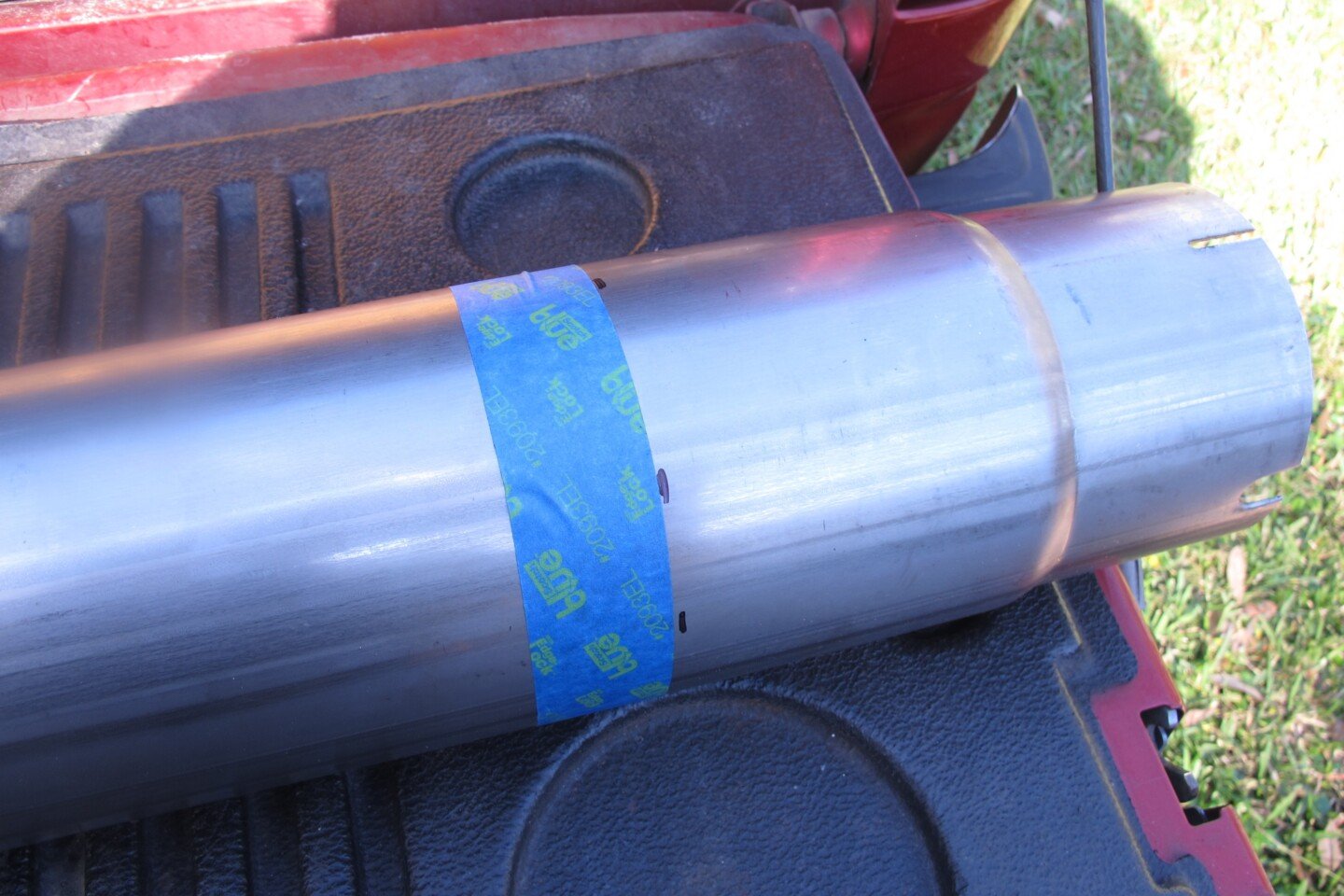
The hardest part about the exhaust upgrade is you need to cut one piece of pipe to a certain length which is dependent on the style of truck you have. WorkHorse is a crew cab with a short bed, so I needed to make the first piece of pipe 7-1/2 inches long.
I chose to incorporate MagnaFlow’s PRO DPF Series (P/N: 17912) exhaust (DPF-back system) because the MagnaFlow kits are known to be quality pieces made from stainless steel that will likely last longer than the truck. MagnaFlow always delivers a great exhaust tone, and like the OE pipe, terminates in a single passenger-side rear exit. Unlike the OE pipe, however, the 5-inch Magnaflow pipe offers great looks with a 6-inch polished tip. While the tailpipe might not deliver noticeable gains in power while the truck is stock, future upgrades will benefit greatly. The installation of the pipe did take a little longer than the CAI, but that is to be expected.
“The OE DPF systems are designed to work in the very tight constraints of EPA restrictions and as such, do well to mitigate changes in the environment it operates in,” says Richard Waitas of MagnaFlow. “Our DPF back systems each offer faster-flowing mandrel bent tubing and in cases where noise mitigation is not problematic, we use our straight-through design mufflers, delete rearmost resonators and increase the diameter of piping to allow for a less restrictive and efficient path for exhaust expulsion. We can observe small increases in power on stock vehicles, but the increased capacity is where they will shine. CARB E.O. calibrations that increase boost will benefit more when given a higher efficiency exit pipe.”
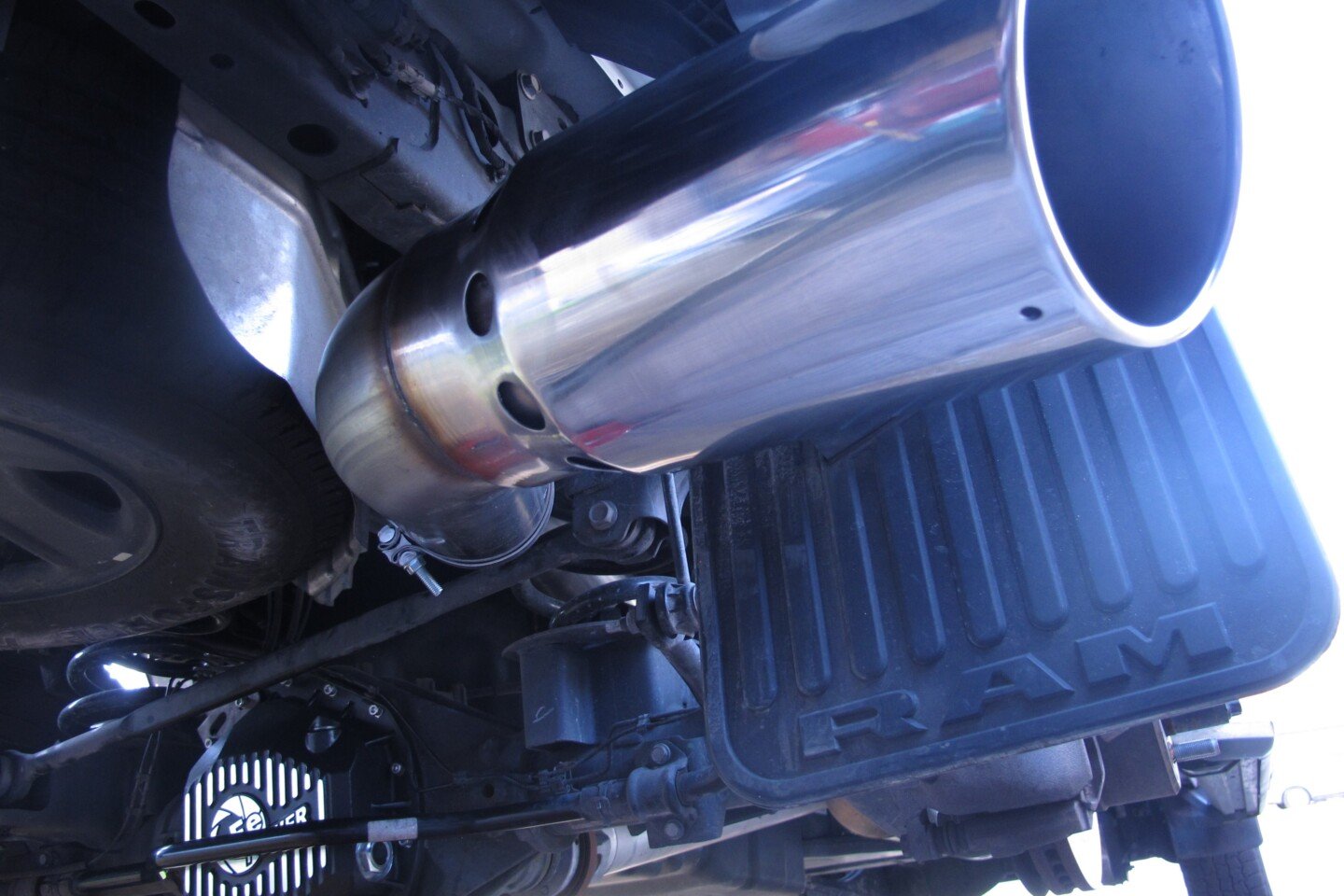
Do not tighten any of the clamps or hangers until you have the pipe positioned properly so it doesn’t rub anything or rattle. Once in place, then tighten them.
The Results Are In
With the Magnum FORCE cold air intake and the DPF-back exhaust mounted, it was time to make three more pulls on the truck. Again, while using the same roads and driving style on the same day, the numbers came in as follows: 0-60 mph was 8.71 seconds. It did improve times. As I stated earlier, the exhaust helped immediately but will show even more benefit when other performance upgrades are installed in the near future.
These are just two simple bolt-ons that were installed in an afternoon. The tests were done without any canned or custom tunes installed on the truck. The gains are what my stock truck actually saw, and any time you can improve performance and remain emissions-legal, that’s a win in my book.
The OE filtration system on the left has a pipe that is not smooth internally and creates turbulence. The aFe POWER filtration kit has a smooth connection to the turbos which does not create turbulence and offers better flow.





